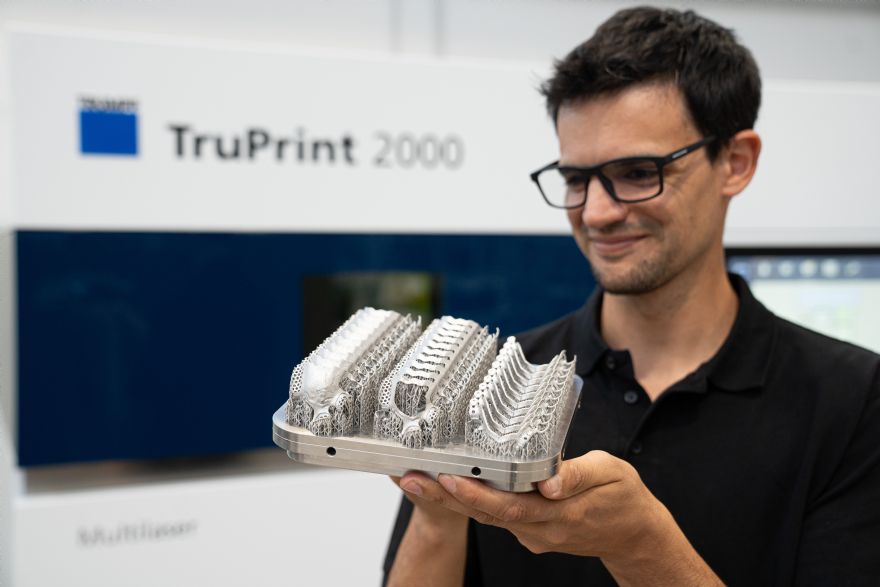
Germany-based
Trumpf enables cost-effective and sustainable mass production with its 3-D printers and in many cases, the high-tech company uses its own systems for the sustainable production of its own series components. This was outlined earlier today at Trumpf’s online press conference held to promote the company’s participation at the
Formnext Expo 2023 trade show taking place in Frankfurt 7-10 November, attended by
Machinery Market.
Richard Bannmüller, CEO of Trompf Laser and System Technology, said: “Additive manufacturing (AM) beats all conventional manufacturing methods in terms of cost and carbon footprint for some of our components. One example is the production of engine coolers built into cutting units of the TruLaser 5030. We save costs and have been able to reduce CO
2 emissions per part produced by 83% compared to a conventionally manufactured assembly.”
AM is now prevalent in many industrial sectors including medical technology, tool and mould making and aerospace. Mr Bannmüller added: “We are the technology and market leader in 3-D printers for the dental industry and we want to further expand this position.” With that goal in mind, Trumpf is launching the new TruPrint 2000 at
Formnext 2023 taking place in Frankfurt. Powered by a 500w laser and wtih a square build plate, the machine is designed for the mass production of components and is also suitable for dental prostheses.
Mr Bannmüller continued: “It is now impossible to imagine the aerospace industry without AM of series parts. Our customer Airbus, for example, uses AM to produce components for passenger aircraft and helicopters.”
The series parts are particularly light and at the same time very stable. They therefore meet the high quality standards in aviation. Tool and mould making also benefits from 3-D printing. Designers can rethink the design of components in AM geometries that cannot be implemented in other ways, such as internal cooling channels for their tools. Mr Bannmüller explained: “Other industries are also discovering more and more the potential applications of 3-D printing. One example is the 3-D printing of bicycle components.”
For example, manufacturers can use 3-D printers to produce brake levers made of titanium. AM is what makes the cost-effective processing of this material possible in the first place.
Mr Bannmüller concluded: “Our robust systems deliver repeatable results, making them particularly suitable for industrial use. This is where our experience as a machine builder and laser specialist comes in handy. The laser, together with its optics and sensor technology, is crucial for productive AM.”
Among other components, the high-tech company uses its own laser sources in its 3-D printers.